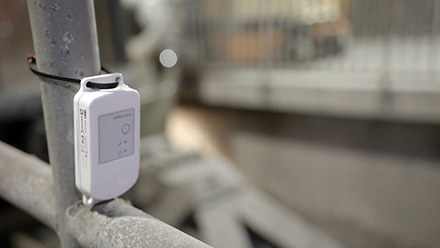
The Ground Is Deforming, and Buildings Aren't Ready
Research uses sensor network to quantify effects of subsurface climate change on civil infrastructure.
Alessandro Rotta Loria - CEE

We're tackling the grand challenges of today and tomorrow with a distinctly Northwestern mindset.
The grand challenges we face today are obvious: Tackling climate change. Exploring space travel. Maximizing artificial intelligence. Eradicating disease.
Equipped with future methods of engineering and an educational skill set rooted in whole-brain thinking, we will use our expertise to approach these problems in uniquely targeted ways to make the greatest possible impact.
AI meets the physical world, interacting with and learning from its environment
Leveraging strengths in robotics, AI and machine learning, and sensor networks, we will maximize AI's impact in the physical world by designing sensor-actuator and mechanical systems that can be embedded within complex networks - from the power grid to autonomous vehicles to smart factories.

Research uses sensor network to quantify effects of subsurface climate change on civil infrastructure.
Alessandro Rotta Loria - CEE
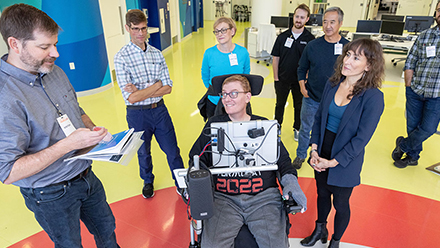
Project Drive aims to bring to market first active driving assistance system for power wheelchairs, increasing access to safe, independent operation.
Brenna Argall - ME, CS

Team designs a power system for the Array of Things sensor network useable in a prairie setting.
William Miller - ChBE
Mitigate harm and decarbonize the future
If the twentieth century challenged engineers to make cities livable, the twenty-first century has challenged us to make those same communities sustainable and also adaptive to extreme weather events. By connecting sustainability, urban environments, and equitable climate technologies, Northwestern engineers will not only help decarbonize the earth but will also help mitigate the effects of climate change on people and communities. We will build, preserve, and restore systems to support human activities and minimize our footprint on nature.
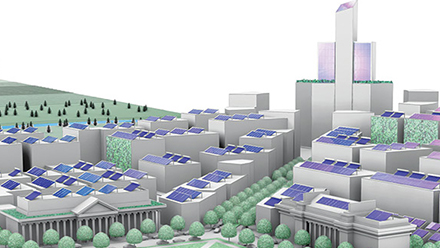
How to make cities more sustainable, surviving and thriving in tune with nature.
Kimberly Gray - CEE
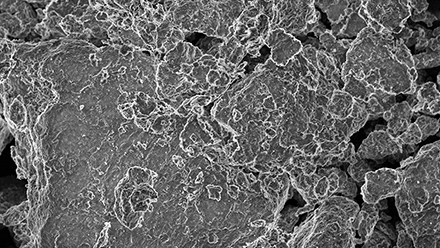
Research explains explain how soil sequesters plant-based carbon from the atmosphere.
Ludmilla Aristilde - CEE
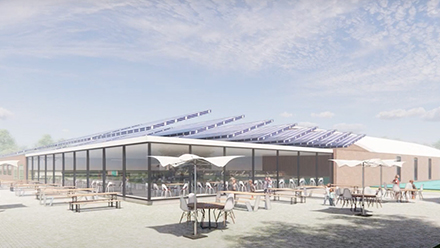
The design concept refurbishes a junior high school, keeping sustainability and human experience at the forefront.
Giorgia Chinazzo - CEE
From space to deep sea and beyond, enable new technologies in harsh environments
Surviving and thriving in the harshest environments - on Earth or elsewhere in the solar system - will require specialized devices, infrastructure, and communication systems optimized for these unique conditions. Northwestern leads in developing the materials and technology to support these endeavors.
Our civil and environmental engineers are working with materials scientists, mechanical engineers, chemical engineers, and chemists to devise the foundational components to support human settlements in the most severe environments. Their work is dual-purposed: the same materials and methods used to build habitats on Mars, for example, could also help rapidly produce housing in areas hit by natural disasters on Earth.
But our work doesn't stop there. We're also studying the optimal team dynamics to support successful work within these environments.
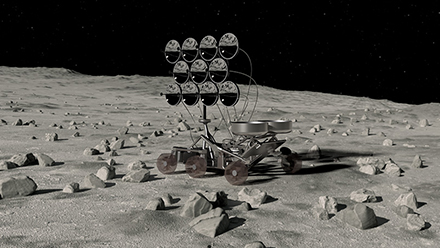
Students explored methods to process local resources and cast critical infrastructure on Lunar surface.
Ian McCue - MSE
Read about the team selected for the NASA BIG Idea Challenge
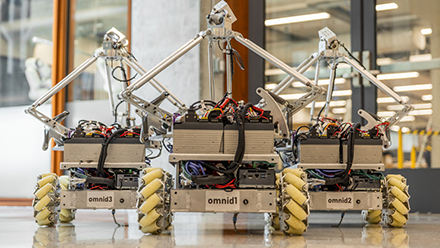
New mobile "mocobots" could signal new era of human-robot interaction in construction and space exploration.
Kevin Lynch - ME

Faculty study team problem-solving and human systems integration for exploration of deep space.
Noshir Contractor - IEMS
Improve the quality of life, not just longevity
Engineering and technology can do more than simply cure disease or extend life. Technologies that interact with the human body and optimize health will advance and translate biomedical research to maximize human well-being and improve quality of life. We will explore innovative technologies that could change how the human body responds to disease and heals from injury as well as improve short- and long-term health outcomes.
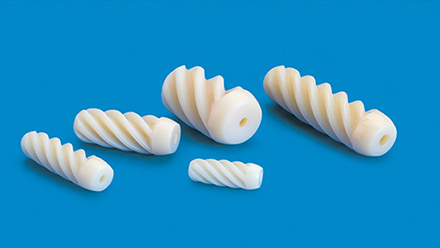
Resorbable anti-inflammatory tendon fixation technology used in patients for the first time.
Guillermo Ameer - BME
Read about resorbable anti-inflammatory tendon fixation technology
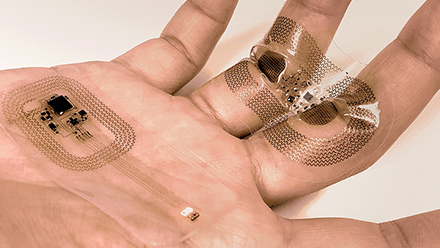
Soft, flexible wireless sensors allow parents to hold their premature babies.
John Rogers - BME, MSE, ME
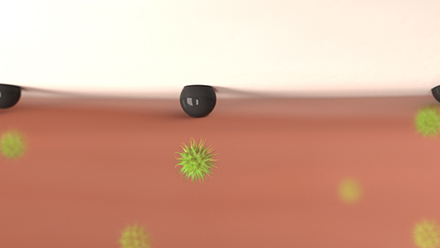
Synthetic cream also protects skin from sun damage.
Nathan Gianneschi - MSE, BME